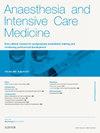疼痛的解剖
IF 0.3
Q4 ANESTHESIOLOGY
引用次数: 0
摘要
疼痛是一种个人的、独特的感觉和情感体验。伤害感觉不同于疼痛,它考虑的是编码和处理有害刺激的神经过程。解剖上有害的刺激由伤害感受器转导成电信号,由一级神经元传递到脊髓背角。从脊髓的二级神经元以束状分布到丘脑,在那里,三级神经元继续延伸到更高的大脑中心。大脑中没有已知的主要疼痛处理中心,相反,多个不同的区域在对有害刺激作出反应时被激活并相互作用。与疼痛感知相关的大脑中心与与抑郁相关的大脑中心重叠。大脑调节它接收到的伤害性信息,并可以施加反伤害性和亲伤害性的影响。外周神经系统和中枢神经系统的病理可以导致痛觉和疼痛,正如高级大脑中枢相互作用的变化一样。了解与疼痛和伤害感受相关的解剖结构,有助于了解不同的治疗方法可以应用于何处来减轻疼痛。本文章由计算机程序翻译,如有差异,请以英文原文为准。
The anatomy of pain
Pain is a sensory and emotional experience that is personal and unique to an individual. Nociception is different from pain and considers the neural process of encoding and processing noxious stimuli. Anatomically noxious stimuli are transduced by nociceptors to an electrical signal carried by first-order neurons to the dorsal horn of the spinal cord. From the spinal cord second-order neurons project in tracts to the thalamus, where third-order neurons continue to higher cerebral centres. There is no known primary pain processing centre in the brain, instead multiple different areas activate and interact in response to noxious stimuli. The brain centres associated with pain perception overlap with those involved in depression. The brain regulates the nociceptive information it receives and can exert both anti- and pro-nociceptive influence. Pathology in the peripheral and central nervous systems can contribute to nociception and pain, as can changes in the interaction of higher cerebral centres. Appreciating the anatomical structures involved in pain and nociception affords an understanding of where different therapies may be applied to alleviate pain.
求助全文
通过发布文献求助,成功后即可免费获取论文全文。
去求助
来源期刊

Anaesthesia and Intensive Care Medicine
ANESTHESIOLOGY-
CiteScore
0.50
自引率
0.00%
发文量
152
期刊介绍:
Anaesthesia and Intensive Care Medicine, an invaluable source of up-to-date information, with the curriculum of both the Primary and Final FRCA examinations covered over a three-year cycle. Published monthly this ever-updating text book will be an invaluable source for both trainee and experienced anaesthetists. The enthusiastic editorial board, under the guidance of two eminent and experienced series editors, ensures Anaesthesia and Intensive Care Medicine covers all the key topics in a comprehensive and authoritative manner. Articles now include learning objectives and eash issue features MCQs, facilitating self-directed learning and enabling readers at all levels to test their knowledge. Each issue is divided between basic scientific and clinical sections. The basic science articles include anatomy, physiology, pharmacology, physics and clinical measurement, while the clinical sections cover anaesthetic agents and techniques, assessment and perioperative management. Further sections cover audit, trials, statistics, ethical and legal medicine, and the management of acute and chronic pain.
 求助内容:
求助内容: 应助结果提醒方式:
应助结果提醒方式:


